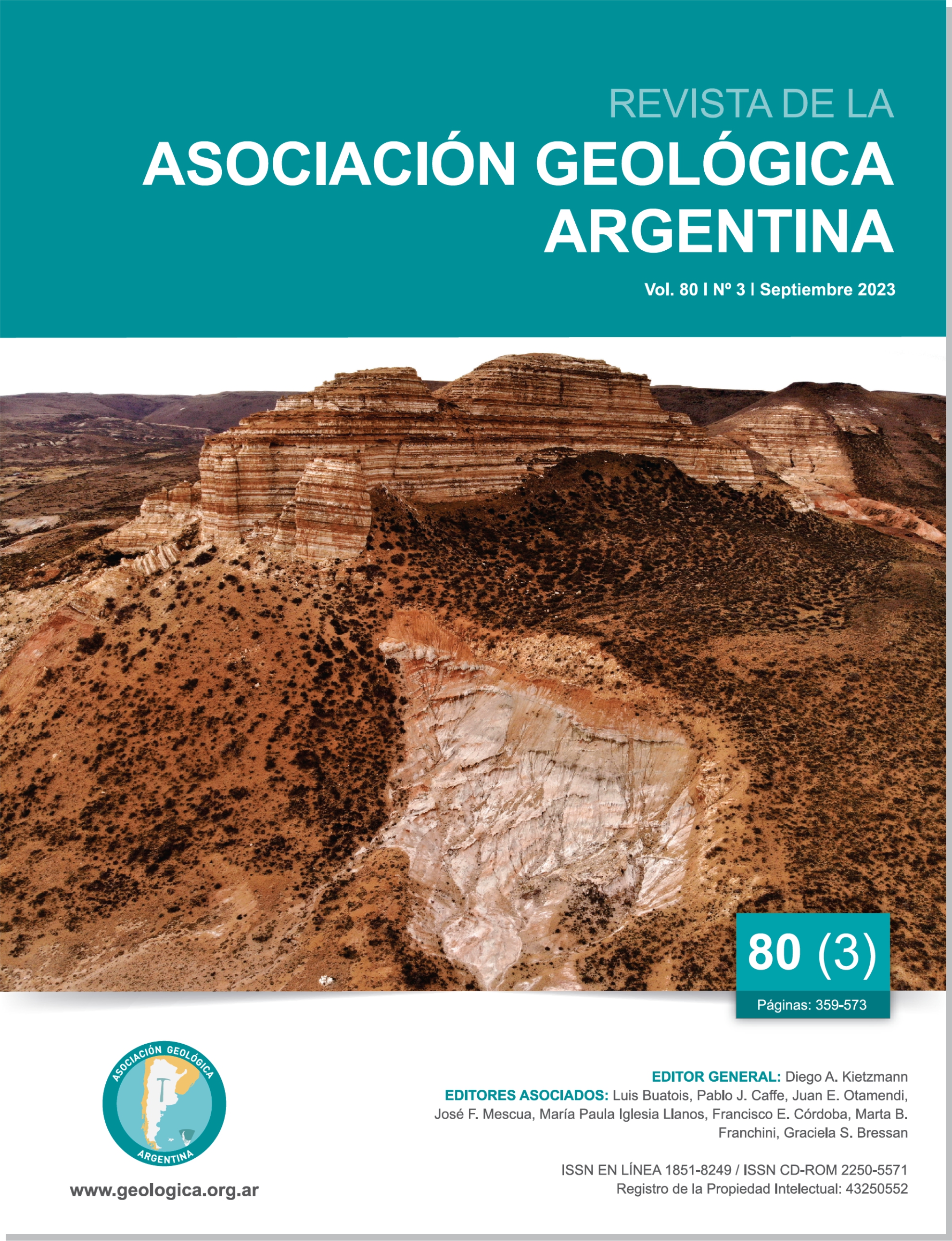Petrology and structure of the Cóndor Huasi Pluton, Sierra del Tigre, Province of Córdoba: a syntectonic leucomonzogranite with garnet and tourmaline
Main Article Content
Abstract
The Cóndor Huasi pluton outcrops to the west of the Sierras Pampeanas of Córdoba, with a tabular-curved shape (major axis N 330º) and concordant with the S2 foliation of the banded schists country-rocks. It is composed of two facies, coarse and fine, of muscovitic leucomonzogranites with biotite, apatite, garnet and tourmaline. The garnet (Sps36-43Grs32-36Alm21-28Py0-1) is xenolithic, with a deep metamorphic core and a reequilibrated rim in the magmatic setting of the granite. Considering the primary biotite, the crystallization temperature would be ~ 631 ºC. The internal structure of the pluton shows two foliations. Si1 is a primary magmatic flow foliation, materialized by the planar orientation of xenoliths and enclaves, and by the network of feldspars in the granite. Si2 is a secondary foliation, produced by subsolid deformation, between ~ 650-700 °C and ~ 400-250 °C. The emplacement was syntectonic on the eastern flank of a major type 1C fold, with an axial plane of S3 cleavage, expressed as fan-shaped fractures in the pluton. Si2, parallel to S3, was a shear flattening plane during folding. Geochemically, the granite is moderately peraluminous and calc-alkaline, rich in K, with high SiO2 contents, strongly differentiated and sincollisional. By comparison with similar minor plutons of the Sierras Pampeanas Orientales, such as the nearby La Yeya Norte pluton and the Los Alanices pluton of the low-temperature Ordovician Series of Granites and Granodiorites of the Sierra de San Luis, it would be related to the Famatinian Orogenic Cycle. However, the emplacement on the eastern flank of a major fold formed by Neoproterozoic banded schists suggests an older age.
Article Details

This work is licensed under a Creative Commons Attribution-NonCommercial 4.0 International License.
Nota de copyright
Los autores conservan los derechos de autor y garantizan a la revista el derecho de ser la primera publicación del trabajo licenciado según una licencia de atribución Creative Commons que permite a otros compartir el trabajo con el reconocimiento de la autoría y de la publicación en la que se publicó por primera vez.
Declaración de privacidad
Los nombres y direcciones de correo electrónico introducidos en esta revista se usarán exclusivamente para los fines declarados por esta revista y no estarán disponibles para ningún otro propósito u otra persona.

